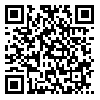Volume 8, Issue 2 (4-2004)
IBJ 2004, 8(2): 69-75 |
Back to browse issues page
Download citation:
BibTeX | RIS | EndNote | Medlars | ProCite | Reference Manager | RefWorks
Send citation to:



BibTeX | RIS | EndNote | Medlars | ProCite | Reference Manager | RefWorks
Send citation to:
Sinha R K, Ray A K. Effect of Acute and Chronic Heat Exposure on Frequency of EEG Components in Different Sleep-Wake State in Young Rats. IBJ 2004; 8 (2) :69-75
URL: http://ibj.pasteur.ac.ir/article-1-514-en.html
URL: http://ibj.pasteur.ac.ir/article-1-514-en.html
Abstract:
The recent literatures indicate that central nervous system (CNS) is highly vulnerable to systemic hyperthermia induced by whole body heating on conscious animals. In the present study, cerebral electrical activity or EEG (electroencephalogram) following exposure to high environmental heat has been studied in moving rats. Rats were divided into three group (i) acute heat stress-subjected to a single exposure for four hours in the BOD (Biological Oxygen Demand) incubator at 38°C (ii) chronic heat stress-exposed for 21 days daily for one hour in the incubator at 38°C, and (iii) handling control groups. EEG signals were recorded on paper along with in digital form on computer hard disk just after the heat exposure from acute stressed rats and on 22nd day from chronic stressed rats. EOG (electrooculogram) and EMG (electromyogram) were also recorded along with EEG to differentiate the different sleep-wake states. Following up, for each group of rats, power spectrum of the EEG for each sleep-wake states, and for all four hours of recording in two-second epochs were calculated and analyzed. The higher frequency components of the EEG power spectrum (b2) was found very sensitive to hot environment and changed significantly in all three sleep-wake states in comparison to the control rats following acute as well as chronic exposure to heat stress. This report demonstrates that the cortical EEG are sensitive to environmental heat and alterations in EEG frequencies in different state of mental consciousness due to high heat can be differentiated efficiently by EEG power spectrum analysis
Keywords: Acute heat stress, Chronic heat stress, Electroencephalogram, Sleep-wake state, Power spectrum
Type of Study: Full Length/Original Article |
| Rights and permissions | |
 |
This work is licensed under a Creative Commons Attribution-NonCommercial 4.0 International License. |







.png)
